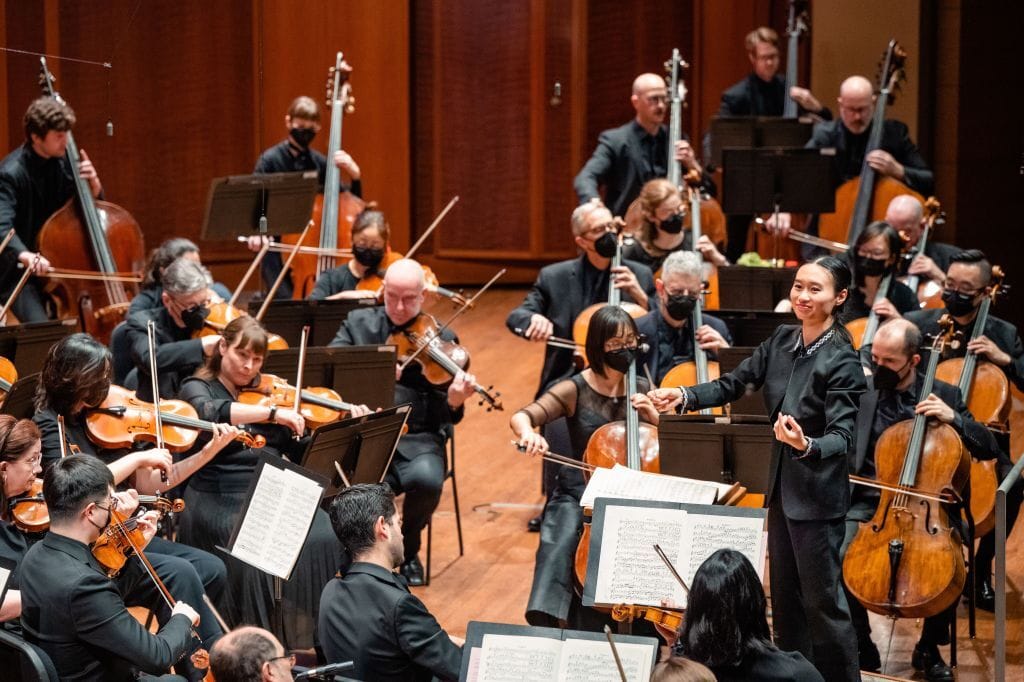- Gathering Note
- Posts
- Tianyi Lu leads the Seattle Symphony in shapely performances of Strauss’ Aus Italien and Mendelssohn’s E Minor Violin Concerto
Tianyi Lu leads the Seattle Symphony in shapely performances of Strauss’ Aus Italien and Mendelssohn’s E Minor Violin Concerto

Photo Credit: Brandon Patoc
At just twenty-two years old, Richard Strauss made a bold decision to shift his compositional focus away from traditional forms such as symphonies. At around the same time, heeding the advice of Johannes Brahms, Strauss traded in his cold North European surroundings for the temperate climate and impetuous lifestyle of Italy, where inspiration struck. It was there that Strauss composed his early work Aus Italien, which broke away from the two conservative symphonies he had produced to date. Each of the piece’s movements is programmatic, foreshadowing many of Strauss’ future works, including his first “hit” Don Juan. However, Aus Italien still adheres to a traditional, symphonic structure with four movements, with the tone and temper of the German symphony.
Yet, Aus Italien is neither a tone poem nor a symphony. It is a musical missing link of sorts connecting the old with the new. It was this work that conductor Tianyi Lu featured in her recent visit to the podium with the Seattle Symphony. Lu is just the latest in a series of guest conductors to visit Seattle, many of whom, like her, are in the early stages of promising international careers. In 2020, Lu won first prize at the Sir Georg Solti International Conducting competition. Permanent postings in Norway and the United Kingdom soon followed.
Lu’s Aus Italien brought out the best in this piece, with poised, pleasing, and rounded phrases. A few times during the performance, I was reminded that not so long ago the Seattle Symphony had a reputation of being a reliable Strauss and Wagner orchestra. Maybe not with the same heft or muscle of European counterparts, but definitely with the bravado necessary to stir the audience. It was a pleasant reminder.
For the first half of the program, Lu paired Mendelssohn’s familiar E Minor Violin Concerto with Tupaia, a recent composition by fellow New Zealander Salina Fisher. Tupaia draws from the legacy of the eponymous Tahitian navigator, who explored the Pacific, mapped islands, and facilitated contact with Captain James Cook. Much like Debussy’s La Mer and John Luther Adams’ Become Ocean, Fisher’s work captures the essence of the sea and sky with undulating string figures and sparkling percussion, albeit without overt sea or wave motifs. It was a pleasant surprise. Both the piece and composer were new to me, and it left me thinking of all the ways oceans, rivers, and nature could be incorporated into a season-long exploration.
The German violinist Arabella Steinbacher joined Lu and the orchestra as soloist for the Mendelssohn concerto. This work hardly needs an introduction. Justly famous, it is packed with melody, continuously flowing over the stage’s edge. Steinbacher played with immaculate care and an always discernible, delicately delivered solo line. She felt every moment, and with the direction of Lu and support from the orchestra, it was great to hear this masterpiece bookended by less familiar works. This concert had been high on my list for Aus Italien alone. But Lu’s skill at the podium made the whole evening memorable. With the Seattle Symphony still searching for a permanent conductor, I could not help but wonder what she could do with the orchestra on a permanent basis.